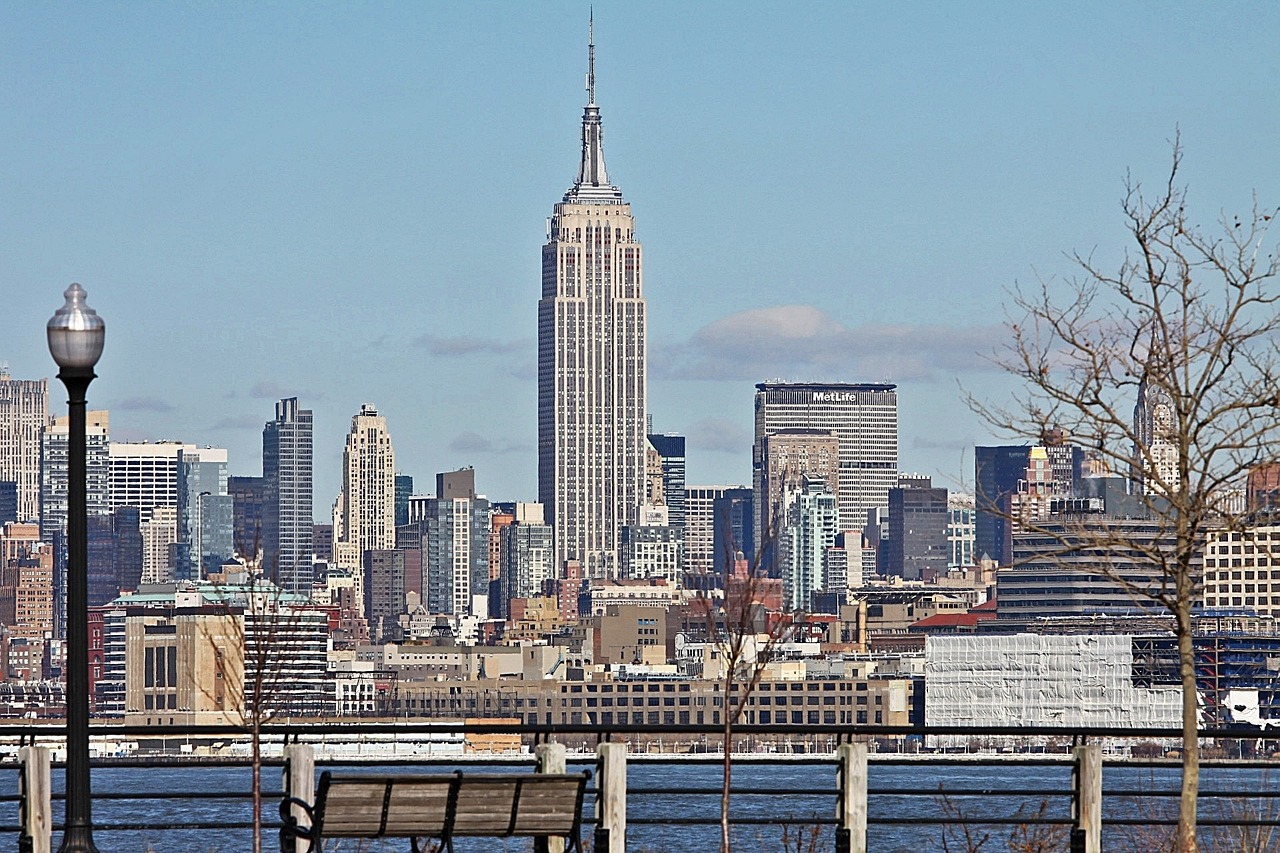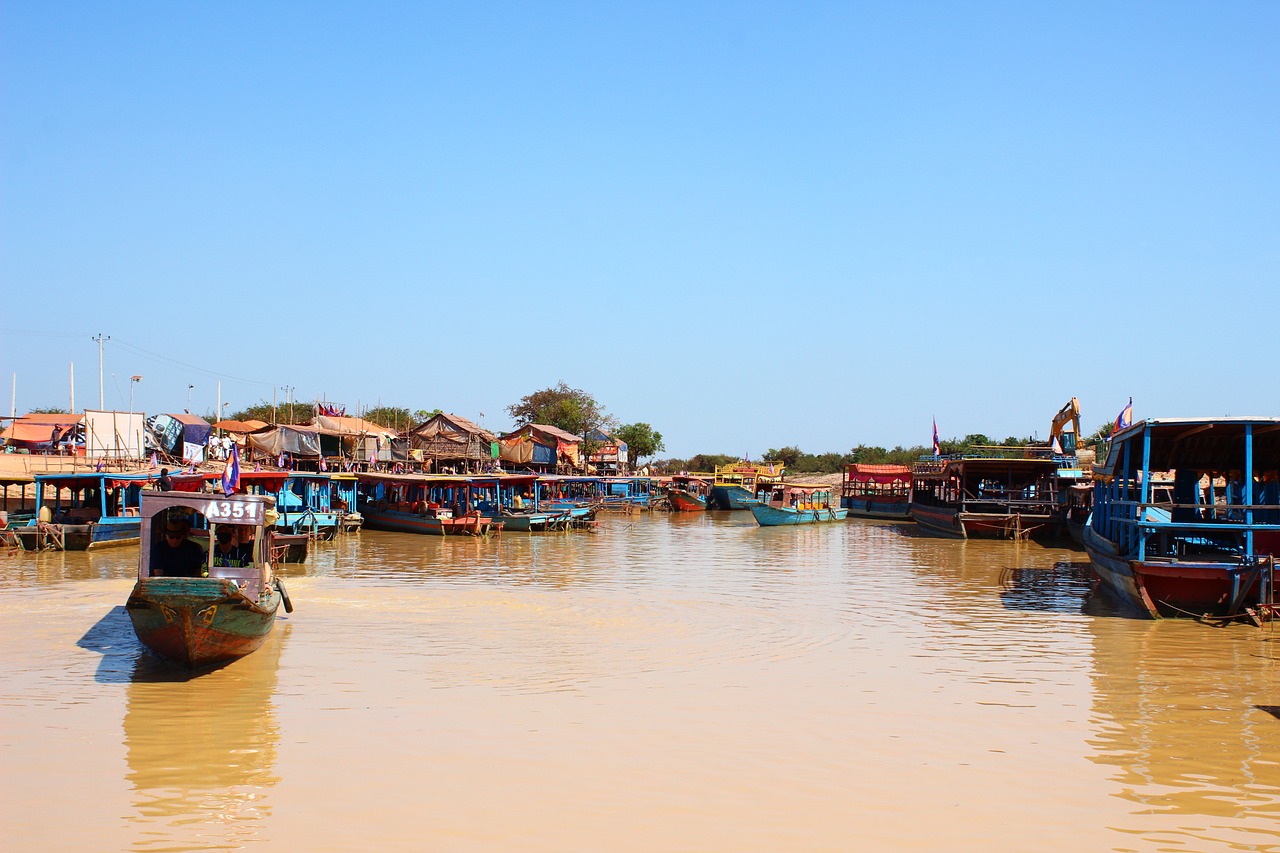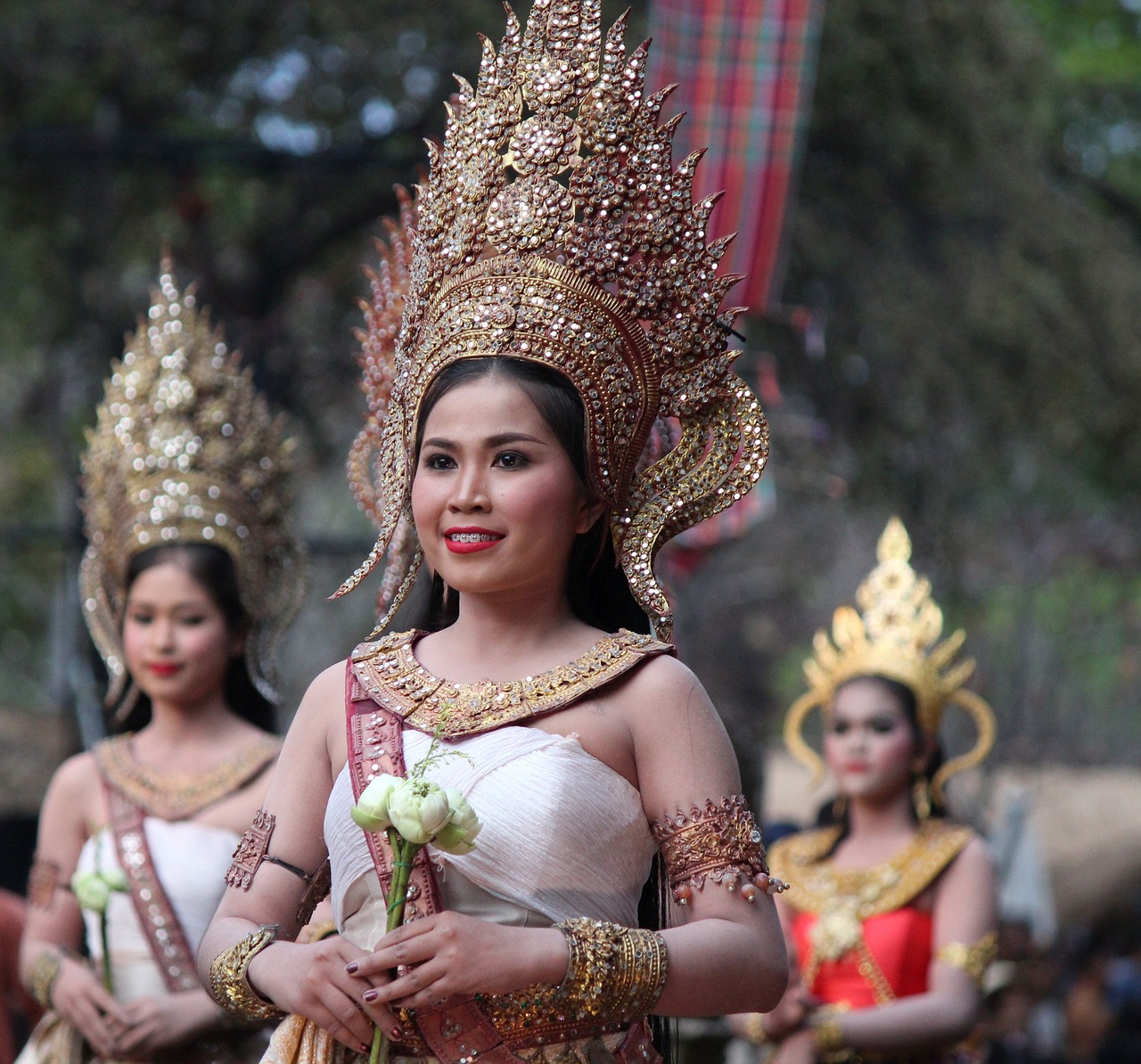The Decline of the Khmer Empire - Historical Perspectives
Once a formidable empire in Southeast Asia, the Khmer Empire's decline is a tale of internal strife, external invasions, and environmental challenges. As we delve into the historical perspectives surrounding its downfall, a complex web of factors emerges, shedding light on the empire's gradual unraveling.
Internal strife and political instability plagued the Khmer Empire, sowing seeds of discord that weakened its central authority. Power struggles and conflicts within the empire's ruling elite eroded its foundation, leaving it vulnerable to external pressures and internal dissent.
External invasions and conquests further hastened the empire's decline, as neighboring kingdoms like the Ayutthaya Kingdom and Champa encroached upon its territories. The relentless onslaught of external forces tested the Khmer Empire's resilience and territorial integrity, ultimately leading to its fragmentation.
Religious shifts and cultural changes also played a significant role in shaping the empire's destiny. The transition from Hinduism to Buddhism brought about profound societal transformations, impacting governance structures and societal norms within the empire.
Economic challenges, including trade disruptions and resource depletion, added to the empire's woes. The decline of key economic centers like Angkor dealt a severe blow to the empire's prosperity, exacerbating its already precarious position on the regional stage.
Environmental degradation and climate change further compounded the empire's troubles, affecting agricultural productivity and exacerbating existing vulnerabilities. Deforestation and ecological decline took a toll on the empire's ability to sustain its population and maintain its agricultural output.
Despite its decline, the Khmer Empire's architectural legacy endures as a testament to its former glory. The iconic temples of Angkor Wat and Bayon stand as reminders of the empire's grandeur, reflecting its rich cultural heritage and architectural prowess.
In the modern era, the repercussions of the Khmer Empire's decline continue to reverberate through Cambodian society. Efforts to revive and preserve its cultural heritage through tourism and conservation initiatives underscore the empire's enduring influence on contemporary Cambodian identity.
As we reflect on the lessons learned from the Khmer Empire's decline, we gain valuable insights into the complexities of empire-building, governance, and sustainability. The empire's historical significance serves as a poignant reminder of the fragility of power and the enduring legacy of past civilizations.

Internal Strife and Political Instability
Internal Strife and Political Instability played a crucial role in the decline of the once-mighty Khmer Empire. The empire faced significant challenges due to internal power struggles and political unrest that weakened its central authority. Various factions vying for control led to a fractured leadership structure, making it difficult to maintain unity and effective governance.
One of the key factors contributing to the internal strife was the struggle for succession among competing noble families and court officials. This power struggle often resulted in violent conflicts and assassinations, further destabilizing the empire. The lack of a clear line of succession and the absence of a strong, central leadership figure exacerbated the political instability within the Khmer Empire.
Moreover, corruption and nepotism within the ruling elite bred discontent among the populace, leading to widespread disillusionment with the government. The mismanagement of resources and the unequal distribution of wealth further fueled social unrest, creating a volatile environment that hindered the empire's ability to address external threats effectively.
The weakening of the central authority due to internal strife made the Khmer Empire vulnerable to external invasions and conquests. Neighboring empires and kingdoms, such as the Ayutthaya Kingdom and the Champa, took advantage of the internal divisions within the Khmer Empire to expand their territories and influence at the expense of Khmer sovereignty.
In conclusion, the internal strife and political instability within the Khmer Empire significantly contributed to its decline, highlighting the importance of strong leadership, effective governance, and social cohesion in sustaining the stability and prosperity of an empire.

External Invasions and Conquests
During the twilight years of the Khmer Empire, external invasions and conquests played a significant role in hastening its decline. The once formidable empire faced relentless attacks from neighboring powers, most notably the Ayutthaya Kingdom and the Champa. These external incursions not only eroded the Khmer Empire's territorial integrity but also posed a direct threat to its sovereignty.
The Ayutthaya Kingdom, situated in present-day Thailand, emerged as a formidable rival to the Khmer Empire, engaging in frequent military campaigns to expand its influence at the expense of Khmer territories. The strategic location of the Ayutthaya Kingdom, coupled with its military prowess, posed a formidable challenge to the weakening Khmer forces.
Similarly, the Champa, a kingdom located in present-day central and southern Vietnam, also posed a threat to the Khmer Empire through military incursions and territorial conflicts. The Champa's maritime capabilities allowed for swift and decisive strikes along the Khmer coastline, further destabilizing the already vulnerable empire.
These external invasions and conquests not only drained the Khmer Empire of its military resources but also sapped its economic strength, as the empire struggled to defend its borders and maintain control over key trade routes. The relentless pressure from neighboring powers ultimately contributed to the disintegration of the once-mighty Khmer Empire, marking a significant turning point in Southeast Asian history.

Religious Shifts and Cultural Changes
During the decline of the Khmer Empire, religious shifts and cultural changes played a significant role in reshaping the social and political landscape of the region. One of the key transformations was the transition from Hinduism to Buddhism, which had profound implications for the empire's governance and societal norms. The adoption of Buddhism as the dominant religion brought about a shift in cultural practices, artistic expressions, and philosophical beliefs within the Khmer society.
With the rise of Buddhism, the architectural focus of the empire also shifted, leading to the construction of grand Buddhist temples and monuments, such as the famous Bayon temple with its iconic smiling faces. This cultural shift not only altered the religious landscape but also influenced the artistic and architectural legacy of the Khmer Empire, leaving behind a rich heritage that continues to be revered today.
Furthermore, the embrace of Buddhism brought about changes in the political structure of the empire, as Buddhist monastic institutions gained influence and played a role in shaping governance and policies. The Buddhist clergy's involvement in state affairs added a new dimension to the traditional power dynamics within the empire, impacting decision-making processes and social hierarchies.
Alongside the religious transformations, cultural changes permeated various aspects of Khmer society, including language, literature, and social customs. The adoption of Buddhist teachings influenced ethical values and moral codes, fostering a sense of compassion, tolerance, and mindfulness among the populace.
Moreover, the integration of Buddhist principles into daily life promoted a sense of community and solidarity, emphasizing the interconnectedness of all beings and the impermanence of worldly pursuits. These cultural shifts not only shaped individual behaviors but also influenced collective attitudes towards authority, hierarchy, and social responsibility.
In essence, the religious shifts and cultural changes during the decline of the Khmer Empire marked a period of transition and adaptation, where traditional beliefs intersected with emerging ideologies to redefine the empire's identity and legacy. The legacy of this cultural metamorphosis continues to resonate in contemporary Cambodian society, reflecting the enduring influence of the past on the present.

Economic Challenges and Trade Disruptions
During its peak, the Khmer Empire boasted a thriving economy supported by extensive trade networks and prosperous economic centers like Angkor. However, as the empire began to decline, it faced a myriad of economic challenges that contributed to its downfall. Trade disruptions played a significant role in destabilizing the economy, leading to a decline in revenue and resources essential for sustaining the empire's operations.
One of the primary economic challenges faced by the Khmer Empire was the disruption of trade routes due to external invasions and conflicts with neighboring kingdoms. The disruption of trade not only hampered the flow of essential goods and resources but also undermined the empire's economic stability. With key trade routes compromised, the empire struggled to maintain its economic prosperity and faced shortages in vital commodities.
Moreover, the depletion of natural resources, such as timber and precious metals, further exacerbated the economic challenges faced by the Khmer Empire. As resources dwindled, the empire's ability to sustain its economy and support its population diminished, leading to increased strain on existing economic infrastructure and systems.
The decline of key economic centers, particularly the iconic city of Angkor, also played a pivotal role in the economic challenges confronting the Khmer Empire. Once a bustling hub of trade and commerce, Angkor's decline symbolized the empire's fading economic prowess and highlighted the broader economic struggles faced by the civilization.
Additionally, the shift in trade patterns and the emergence of new economic powers in the region posed significant challenges to the Khmer Empire's economic stability. As neighboring kingdoms and empires rose to prominence, the empire found itself increasingly marginalized in the regional economy, further isolating it from vital trade networks and resources.
In conclusion, the economic challenges and trade disruptions faced by the Khmer Empire were instrumental in hastening its decline. As the empire grappled with diminishing resources, disrupted trade routes, and the loss of key economic centers, its once-thriving economy faltered, ultimately contributing to its downfall.

Environmental Degradation and Climate Change
Environmental degradation and climate change played significant roles in the decline of the once-mighty Khmer Empire. The vast deforestation and environmental degradation that occurred during the empire's peak, particularly in the construction of monumental structures like Angkor Wat, led to soil erosion and loss of agricultural productivity. As a result, the empire faced challenges in sustaining its population and food production.
Moreover, the changing climate patterns, including erratic rainfall and droughts, further exacerbated the agricultural difficulties faced by the Khmer Empire. The reliance on monsoon rains for rice cultivation made the empire vulnerable to climate fluctuations, impacting its ability to feed its people and maintain economic stability.
The environmental degradation also had long-term consequences on the ecosystem surrounding the empire. The loss of forests and biodiversity not only affected the local flora and fauna but also disrupted the natural balance of the region, leading to ecological imbalances that further strained the empire's resources and resilience.
Furthermore, the depletion of natural resources, such as timber and water sources, due to intensive agricultural practices and urban expansion, contributed to the environmental challenges faced by the Khmer Empire. The overexploitation of resources without sustainable management practices hastened the empire's decline and weakened its ability to adapt to changing environmental conditions.

Architectural Legacy and Historical Heritage
When we delve into the architectural legacy of the Khmer Empire, we are met with a breathtaking display of grandeur and artistic mastery that has stood the test of time. The iconic temples of Angkor Wat and Bayon, with their intricate carvings and towering spires, serve as a testament to the empire's architectural prowess and cultural sophistication. These monumental structures not only showcase the engineering marvels of their time but also provide valuable insights into the religious beliefs and societal values of the Khmer people.
Walking through the corridors of Angkor Wat, one cannot help but marvel at the sheer scale and intricacy of the temple complex. Each stone block, each bas-relief panel, tells a story of devotion and dedication to the gods. The symmetrical layout, the celestial alignments, and the intricate carvings depicting scenes from Hindu epics all contribute to the mystical aura surrounding this ancient marvel. It is a place where history comes alive, where the past whispers its secrets to those willing to listen.
Similarly, the enigmatic smiles of the stone faces at Bayon evoke a sense of mystery and wonder. The towers adorned with giant faces, gazing out into the horizon, exude a sense of timeless wisdom and serenity. It is as if the spirits of the past are watching over the land, guarding its secrets and mysteries. The architectural ingenuity displayed at Bayon reflects not only the artistic skills of the Khmer craftsmen but also their deep spiritual connection to the divine.
Moreover, beyond the famous temples of Angkor Wat and Bayon, the Khmer Empire left a lasting architectural imprint on the landscape of Southeast Asia. From the majestic Banteay Srei with its delicate pink sandstone carvings to the imposing Preah Vihear perched atop a cliff, each structure tells a unique story of the empire's cultural richness and artistic sophistication. The intricate details, the elaborate decorations, and the harmonious blend of architectural styles reflect a civilization at the height of its creative power.
In contemporary Cambodian culture, the architectural legacy of the Khmer Empire continues to inspire awe and admiration. The temples of Angkor Wat and Bayon have become symbols of national pride and identity, attracting tourists and scholars from around the world. The preservation and restoration efforts undertaken to safeguard these architectural treasures not only serve to protect the past but also to ensure that future generations can marvel at the grandeur of their ancestors.

Modern-Day Repercussions and Cultural Revival
The decline of the Khmer Empire continues to reverberate through modern-day Cambodian society, leaving a lasting impact on the country's cultural identity and heritage. The once glorious empire, known for its grandeur and architectural marvels, now serves as a poignant reminder of the impermanence of power and the cyclical nature of history.
In the aftermath of the empire's decline, Cambodia faced a period of cultural upheaval and societal transformation. The void left by the Khmer Empire's fall created space for new power structures to emerge, shaping the country's socio-political landscape in unforeseen ways. The legacy of the empire, however, remains deeply ingrained in Cambodian culture, serving as a source of pride and inspiration for many.
Efforts to revive and preserve the cultural heritage of the Khmer Empire have gained momentum in recent years, with initiatives aimed at safeguarding historical sites, promoting traditional arts and crafts, and educating the younger generation about their rich heritage. Tourism has played a significant role in this cultural revival, attracting visitors from around the world to marvel at the awe-inspiring temples of Angkor and immerse themselves in Cambodia's vibrant history.
Despite the challenges posed by rapid modernization and globalization, Cambodians continue to draw strength from their cultural roots, finding solace and resilience in the enduring legacy of the Khmer Empire. The preservation of ancient traditions and customs serves as a testament to the resilience of the Cambodian people and their unwavering commitment to honoring the past while embracing the future.

Lessons Learned and Historical Reflections
As we delve into the decline of the once-mighty Khmer Empire, we uncover valuable lessons that echo through the corridors of history, offering profound insights into the complexities of empire-building, governance, and sustainability. The fall of the Khmer Empire serves as a stark reminder of the impermanence of power and the importance of adaptability in the face of changing circumstances.
One of the key lessons learned from the demise of the Khmer Empire is the detrimental impact of internal strife and political instability on the cohesion and strength of a ruling authority. The power struggles and infighting among the elite class weakened the central governance structure, leaving the empire vulnerable to external threats and internal dissent.
Furthermore, the history of the Khmer Empire underscores the significance of maintaining territorial integrity and sovereignty in the face of external invasions and conquests. The incursions by neighboring empires and kingdoms highlighted the importance of strategic alliances, military prowess, and diplomatic acumen in safeguarding a nation's borders and interests.
Religious shifts and cultural changes also played a pivotal role in the decline of the Khmer Empire, emphasizing the need for a cohesive societal fabric and a shared sense of identity to weather the storms of change. The transition from Hinduism to Buddhism reflected broader shifts in belief systems and social norms, underscoring the interconnectedness of religious practices with governance and social cohesion.
Moreover, the economic challenges faced by the Khmer Empire serve as a cautionary tale about the perils of overreliance on trade routes, resource exploitation, and economic centers. The decline of key economic hubs like Angkor highlighted the fragility of economic systems in the face of external shocks and internal mismanagement.
Environmental degradation and climate change further compounded the challenges faced by the Khmer Empire, shedding light on the interconnectedness between human activities and ecological sustainability. The deforestation and agricultural practices that contributed to environmental degradation underscore the importance of responsible stewardship of natural resources for long-term prosperity.
Despite its fall, the architectural legacy of the Khmer Empire endures as a testament to human ingenuity and artistic expression, serving as a source of inspiration and pride for contemporary Cambodian culture. The iconic temples of Angkor Wat and Bayon stand as reminders of a bygone era, inviting reflection on the transience of power and the enduring beauty of human creativity.
In modern-day Cambodia, the repercussions of the Khmer Empire's decline continue to reverberate through society, prompting efforts to revive and preserve its cultural heritage through tourism and conservation initiatives. The lessons learned from the empire's fall inform contemporary debates on governance, heritage preservation, and sustainable development, shaping the collective memory and identity of the Cambodian people.
As we reflect on the historical significance of the Khmer Empire's decline, we are reminded of the intricate tapestry of human history, woven with triumphs and tribulations, resilience and reckoning. The echoes of the past resonate in the present, guiding us towards a deeper understanding of our shared humanity and the enduring lessons of the ages.
Frequently Asked Questions
- What were the main causes of the decline of the Khmer Empire?
The decline of the Khmer Empire was primarily attributed to internal strife, external invasions, economic challenges, environmental degradation, and cultural shifts. These factors combined to weaken the empire's stability and lead to its eventual downfall.
- How did internal power struggles contribute to the decline of the Khmer Empire?
Internal power struggles within the Khmer Empire created political instability, weakened central authority, and hindered effective governance. This internal discord made the empire more vulnerable to external threats and hindered its ability to address pressing challenges.
- What role did external invasions play in the downfall of the Khmer Empire?
External invasions by neighboring empires and kingdoms, such as the Ayutthaya Kingdom and the Champa, posed significant threats to the territorial integrity and sovereignty of the Khmer Empire. These invasions further weakened the empire's defenses and resources, hastening its decline.
- How did religious shifts and cultural changes impact the Khmer Empire?
The transition from Hinduism to Buddhism, along with other cultural changes, influenced the social fabric and governance of the Khmer Empire. These shifts altered the empire's identity and societal structure, contributing to its overall transformation and eventual decline.
- What economic challenges did the Khmer Empire face during its decline?
The Khmer Empire encountered trade disruptions, resource depletion, and the decline of key economic centers like Angkor. These economic challenges hampered the empire's prosperity and stability, exacerbating its existing vulnerabilities.



















